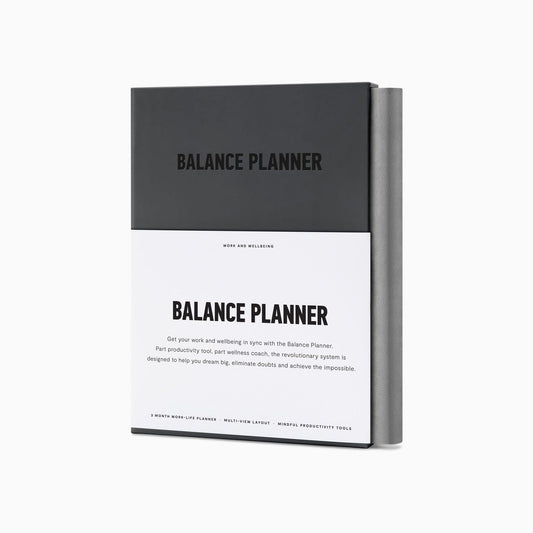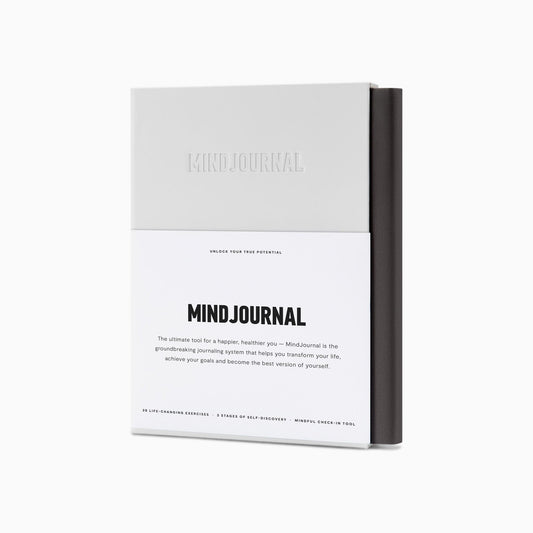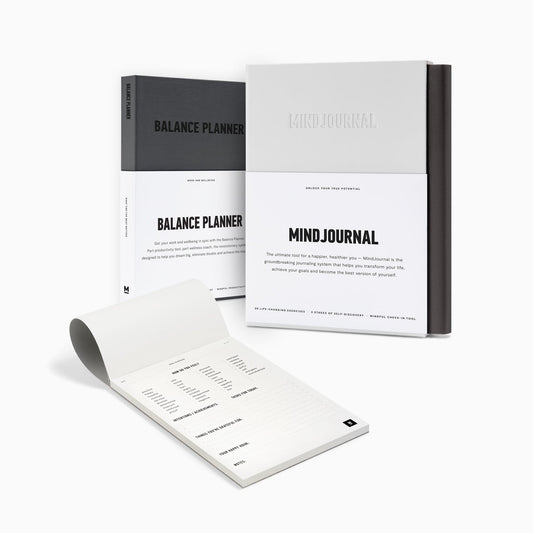Start your journey
Browse our bestsellers for a better you.
Frequently added:




by MindJournal - 9 min read

With a busy lifestyle - full of endless to-dos - getting enough exercise isn’t a given.
But how much exercise is enough, exactly?
Well, the sweet spot of getting a good sweat on seems to vary worldwide.
In the US, around 52.6 million people are now hitting the gym. That’s based on 64.19 million US gym memberships (minus the 18% that go unused).
And over in the UK, 10.3 million people now hold a gym membership; that’s over 15% of the UK population.
Sounds pretty promising, doesn’t it?
The thing is, there’s also plenty of evidence to suggest we’re not quite doing enough.
The latest figures from the UK government suggest around 1 in 3 (34%) of men and 1 in 2 (42%) of women are not active enough for good health. What’s more, further research suggests only 23% of Americans are getting enough exercise too.
But getting enough exercise is one of the most important things you can do to stay healthy. In fact, the right amount of physical activity can help you manage your weight, reduce the risk of disease and even give your brain functions a boost.
Sounds good. But how can you find out if you're actually doing enough?
So this all depends on your physical well-being and age. But the World Health Organisation (WHO) does have some helpful guidelines that cover all age groups:
Children and adolescents (5-17) - WHO recommends a minimum of 60 minutes of moderate to vigorous physical activity a day. It also suggests vigorous aerobic activity and strength-building exercises (at least three days a week).
Adults (18-64) - a minimum of 150 to 300 minutes of moderate (or 75 to 150 minutes of vigorous) aerobic activity a week. Twice-weekly muscle strengthening is also a good idea if possible.
Older adults (over 65) - seniors can follow the same guidelines as younger adults. However, they should include strength and balance training 2 to 3 times a week to protect against falls.
Just a note there are some exceptions; these include pregnant and postpartum women and people living with chronic health conditions and disabilities. Check the WHO website for recommendations around your individual circumstances.
OK, you’ve got everything you need to know. But where do you start?
They always say, "...the hardest part is getting started," right?
We get it. Here's a guide to starting (and sticking to) your path to peak fitness.
Find what you enjoy - sounds obvious, but the best way to stick to an exercise plan is to find an activity you enjoy or, at the least, won't want to quit after session one. So swim a few lengths or run around the park to your favourite playlist - whatever works for you.
Make it work for you - there are no rules for how and when you should exercise; your workout schedule can fit around your lifestyle. If you're an early bird, try hitting the gym before work. Working from home? Try a YouTube video on your lunch break.
Start slow - it's tempting to throw everything you've got at your new routine straightway. But try not to - by starting slowly and gradually building up your fitness; you'll have a better chance of sticking to the plan long-term.
Mix it up - keep things fresh by switching up your exercise routine. If you can, try a blend of aerobic workouts, e.g. running or swimming, strength training, e.g. weightlifting and some balance exercises like yoga. Not only will this prevent boredom, but it will also help you challenge and flex different muscles.
Find a workout buddy - you don't have to go it alone. Exercising with a friend or family member doesn't just make working out more fun; these people can encourage, motivate and help hold you accountable.
Get the right equipment - OK, so you don't need to spend a fortune to get started. But, investing in proper equipment, e.g. running shoes, goggles, etc., will help you commit to the activity and feel the part.
Learn proper form - a big focus when building an exercise routine should be your form. As with many areas of exercise, you can find advice online. If you can, get a gait analysis or look at hiring a personal trainer. However you do it, this one's important to consider to make sure you avoid any injuries.
Setting achievable fitness goals you can reach - or even surpass - is easier than it sounds. You just need to be specific. Using the SMARTER framework (we've talked more about this and goal setting here), you'll stay motivated and hold yourself accountable. Here's how it's done:
Be specific - start by defining exactly what you want to achieve. For example, "I want to run a 5K in under 25 minutes." or "I want to exercise for 45 minutes everyday".
Make it measurable - use quantifiable metrics to track your progress as this will make it easier to see your progress, e.g. time in minutes, distance in miles/kilometres, number of reps, etc.
Stay realistic - it's a great idea to challenge yourself - but stay realistic. Keep in mind your current fitness level and availability to work out. This will help you to get off to a great start and stay motivated to create a healthy habit.
Create a plan - Break your goal down into smaller, actionable steps. Then develop a plan to achieve them. The Balance Planner is perfect for this, use the goal setting toolkit to get started, then map out the details in the monthly, weekly and daily views.
Review and adjust - the good thing about this type of planning is nothing needs to be set in stone. Regularly review your progress - including how you felt afterwards - and adjust your goals accordingly. Don't forget to celebrate the wins and be kind to yourself if there are
any setbacks. They call it a marathon, not a sprint, for a reason. You'll get there.
OK, if you have suffered an injury, you should always seek medical advice and follow the recommended treatment plan. And sometimes, that might mean stopping entirely for a while to recuperate. That's OK; your health comes first.
But what if you can still exercise a little?
Start with modifying your workout to fit your healing journey. Instead of your usual cross-country run, try a long but leisurely walk in nature. Or, if you can't get back to the gym just yet, try some gentle yoga to keep those muscles moving.
It can be frustrating, but try to stay positive. Focus on the progress you've already made. Review your self-care plan and see what you can introduce to replace part of your exercise routine while recovering.
Look after your wellbeing, and you'll bounce back - all the greats do.
The key to getting enough exercise? Do it for yourself and no one else. Try not to worry about the mirror or the scales. Instead, exercise for how it makes you feel. After that, everything else will fall into place.
One last rep? Go on, then.